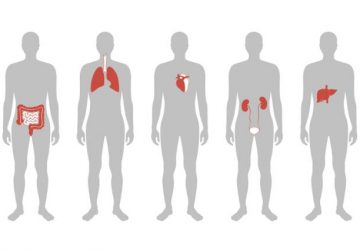E-cigarettes are under scrutiny after reports of more than 200 cases of a mysterious illness

Update: On 6 September, the U.S. CDC said it is now investigating 450 total possible cases of respiratory illness associated with e-cigarette use. In all cases, patients developed an illness after using e-cigarette products that contained THC, THC and nicotine, or nicotine only. Descriptions of the cases have been published in the CDC’s Morbidity and Mortality Weekly Report and The New England Journal of Medicine. The agency says these illnesses are likely associated with chemical exposure, but no specific product, device, or substance has been linked to all cases.
Hundreds of e-cigarette users have been hospitalized with a severe, unknown respiratory disease. At least 215 possible cases have been reported in 25 states, and more are under investigation, according to the most recent figures from the U.S. Centers for Disease Control and Prevention.
Symptoms include breathing difficulty, shortness of breath and chest pain, and sometimes gastrointestinal issues. News reports tell tales of young adults landing in intensive care units, hooked to breathing machines and placed in medically-induced comas. Two people have died.
In many cases, patients have acknowledged recently vaping tetrahydocannabinol (THC), the principal psychoactive constituent in marijuana, officials said.
Federal agencies are working with states to investigate whether the illnesses are linked to specific vaping devices, ingredients, or contaminants in the devices. It is not clear whether all the cases have a common cause, the authorities said.
Separately, the U.S. Food and Drug Administration (FDA) is investigating at least 127 cases of e-cigarette users experiencing seizures. The cases span the last 10 years. The agency on 7 August urged the public to continue reporting suspected cases, and said it didn’t have enough information to determine if e-cigarettes are the culprit of the seizures.
E-cigarettes are electronic devices that heat a liquid containing varying amounts of nicotine, flavorings, and other chemicals. The heat produces an aerosol that users inhale into their lungs (an act known as “vaping”).
Additional substances, including harmful ultra-fine particles and heavy metals, are sometimes present. Other drugs, including THC, can be vaped using e-cigarettes.
What are the known health impacts of vaping?
According to the U.S. Centers for Disease Control and Prevention (CDC), vaping nicotine is less harmful than smoking old-school cigarettes because the aerosol generally contains fewer toxic chemicals than the 7,000 or so in smoke from regular, combustible cigarettes.
But it’s unclear whether e-cigs can actually help people transition off combustible tobacco products, or quit nicotine altogether. The FDA has said it is exploring the idea, but so far, the scientific evidence is mixed. The FDA has not approved an e-cigarette device as a quit-smoking aid.
Meanwhile, a bigger health problem has emerged: E-cigarettes are attracting new people, particularly teenagers, to nicotine. Just when it seemed like smoking was going out of style, e-cigs delivered nicotine in a new, hip way.
A 2018 CDC study found that nearly 21 percent of high school students vape. It hasn’t helped that many developers of the devices add candy flavorings and advertise in ways that attract young people.
Nicotine in any form is highly addictive and harmful to adolescent and young adult development, according to the CDC. Large doses of nicotine can cause seizures, dizziness, nausea, tremors, or even death (thus the FDA’s investigation into the 127 cases of seizures associated with vaping).
E-cigarette devices have also been known to suddenly explode, causing third-degree burns and the loss of body parts. Explosions can happen when an e-cigarette’s battery fails through a process called thermal runaway, where excessive heat leads to a fiery self-destruction.
Health departments respond to illness reports
In response to both the mysterious spate of respiratory illness, and the long-term public health risk of e-cigarettes, state and city officials are issuing alerts. “Stop using vaping products,” the health department of the city of Milwaukee urged residents last week.
The state of Michigan has banned flavored nicotine vaping products. The temporary ban will last for six months while further regulations are developed.
In a letter to state senators [PDF] about the new legislation, the governor of Michigan, Gretchen Whitmer, did not link the new laws to the spate of respiratory illnesses or to seizures. Instead, she said she signed the laws in response to a “public health crisis” among youth, who are nearly three times more likely to become regular tobacco smokers after trying e-cigarettes, she said.
Meanwhile, it appears that cases of the mysterious respiratory illness continue to rise. An investigation by the Washington Post reported nearly 350 possible cases nationwide.
Source: www.spectrum.ieee.org






















































